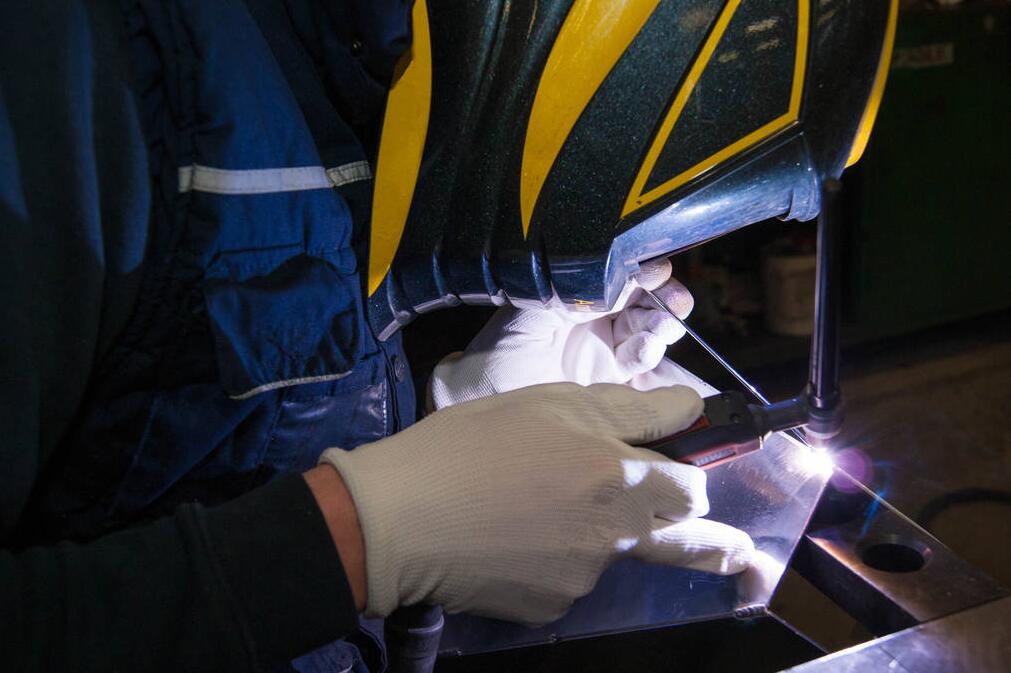Is Aluminum Alloy Welding Difficult?
 Apr 28, 2023|
Apr 28, 2023| View:254
View:254Aluminum alloy welding is very different from the welding of general materials such as carbon steel and stainless steel, and it is easy to produce many defects that other materials do not have.
Targeted measures need to be taken to avoid them. Let's take a look at the common problems and requirements for welding processes in aluminum alloy welding.
Welding difficulties of aluminum alloy materials
Aluminum alloy materials have a thermal conductivity that is 1 to 3 times higher than steel, making them easy to heat up. However, this material is not resistant to high temperatures and has a large
coefficient of thermal expansion, which can easily cause welding deformation. Moreover, this material is prone to cracking, welding penetration, and other phenomena during welding, especially for
thin aluminum plates, which are more difficult to weld. Aluminum alloy welding generates a certain amount of hydrogen gas in the molten pool. If these gases are not discharged before the formation
of the weld seam, they will leave pores in the weld seam, affecting the quality of the welded part.
Aluminum is a metal that is highly susceptible to oxidation, and there is almost no unoxidized aluminum in the air. The surface of aluminum alloy is directly exposed to air, and a dense and insoluble
layer of aluminum oxide film will form on its surface. The oxide film is wear-resistant and high-temperature resistant, with a melting point of over 2000 degrees Celsius. Once formed, the subsequent
processing difficulty will greatly increase. Aluminum alloy welding also has problems such as easy softening of joints, low surface tension in the melting state, and defects.

Requirements for aluminum alloy welding process
From the perspective of welding equipment, if a MIG/MAG welding machine is used, it must have pulse functions such as single pulse or double pulse. The best dual pulse function. Double pulses are
the superposition of high-frequency and low-frequency pulses, which are modulated by low-frequency pulses. This causes the double pulse current to switch periodically between the peak current and
the base current at the frequency of low-frequency pulses, resulting in the formation of regular fish scale patterns in the weld seam.
To change the forming effect of the weld seam, the frequency and peak value of low-frequency pulses can be adjusted. Adjusting the low-frequency pulse frequency will affect the switching speed between
the peak and base values of the double pulse current, which will change the spacing size of the weld scale pattern. The higher the switching speed, the smaller the spacing between the fish scale patterns.
Adjusting the peak value of low-frequency pulses can change the stirring effect on the molten pool, thereby changing the welding depth. Choosing an appropriate peak has a significant effect on reducing
the generation of pores, reducing heat input, preventing expansion deformation, and improving weld strength.
Furthermore, from the perspective of the welding process, the following precautions should be taken: firstly, the surface of the aluminum alloy should be cleaned before welding, and all dust and oil stains
must be removed. Acetone can be used to clean the surface of aluminum alloy welding joints. For thick aluminum alloys, first use a wire brush to clean, and then use acetone to clean. The second is that
the welding wire material used should be as close to the base material as possible. Whether to choose aluminum silicon welding wire or aluminum magnesium welding wire should be determined based
on the requirements of the weld seam. In addition, aluminum magnesium welding wire can only be used for welding aluminum magnesium materials, while aluminum silicon welding wire has a relatively
wider range of uses, which can be used for welding both aluminum silicon materials and aluminum magnesium materials. Thirdly, when the thickness of the sheet metal is large, it is necessary to preheat
the sheet metal in advance, otherwise it is easy to cause incomplete welding. During arc stopping, a small current should be used to fill the pit. Fourthly, when conducting tungsten argon arc welding, a DC
argon arc welding machine should be used, alternating forward and reverse AC and DC. Forward DC is used to clean the aluminum surface oxidation mold, and reverse DC is used for welding.
Additionally, it should be noted that welding specifications are set based on the thickness of the plate and the requirements of the weld seam; MIG welding requires the use of aluminum dedicated wire feeding
wheels and the use of Teflon wire guide tubes, otherwise aluminum shavings may be generated; The length of the welding gun cable should not be too long. The aluminum welding wire is relatively soft, and a
long welding gun cable can affect the stability of wire feeding.






